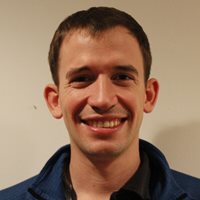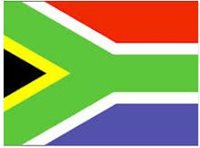David (Allen) Roberts
 Allen graduated from Stanford University, where he studied chemistry. After spending a year working in a bioengineering lab in Switzerland, he switched his research focus to public health and worked as a Post-Bachelor Fellow at the Institute for Health Metrics and Evaluation (IHME). At IHME, he worked on estimating the global burden of HIV, evaluating maternal and child health services in Uganda at the subnational level, and evaluating the quality of HIV service delivery. After three years at IHME, where he completed an MPH, Allen began the MD/PhD program at the University of Washington. Allen’s research interests include HIV prevention, infectious disease modeling and program evaluation.
Allen graduated from Stanford University, where he studied chemistry. After spending a year working in a bioengineering lab in Switzerland, he switched his research focus to public health and worked as a Post-Bachelor Fellow at the Institute for Health Metrics and Evaluation (IHME). At IHME, he worked on estimating the global burden of HIV, evaluating maternal and child health services in Uganda at the subnational level, and evaluating the quality of HIV service delivery. After three years at IHME, where he completed an MPH, Allen began the MD/PhD program at the University of Washington. Allen’s research interests include HIV prevention, infectious disease modeling and program evaluation.
 Project: "Optimizing antiretroviral therapy delivery: The cost-effectiveness of clinic- and community-based models for ART initiation and monitoring among HIV-positive persons in South Africa."
Project: "Optimizing antiretroviral therapy delivery: The cost-effectiveness of clinic- and community-based models for ART initiation and monitoring among HIV-positive persons in South Africa."
July 6, 2016 - August 27, 2016
South Africa
What does the Kean Fellowship mean to you?
The Kean Fellowship is a wonderful resource for medical students to obtain valuable research experience early in their careers. We are given the opportunity to gain the skills and experience to contribute to public health in addition to our training in patient care. Without the Kean Fellowship, I wouldn’t have the funding necessary to travel to our study sites to collect data. After this summer, I will have obtained the necessary costing data such that after I finish my second year of medical school and our study follow-up ends, I will have the outcomes data needed for our cost-effectiveness analysis.
What do you anticipate learning?
In South Africa, I will have the opportunity to delve deeply into understanding the programmatic costs of community-based antiretroviral therapy (ART) delivery. As treatment goals have expanded to reach the UNAIDS 90-90-90 target, ministries of health are confronted with the need to provide widespread and effective access to ART using finite resources. We are evaluating whether community-based ART initiation and refill can be a safe and cost-effective method for expanding access to HIV treatment.
We will assess the effectiveness of the community-based model by measuring viral loads after one year. However, policymakers need to know what it will cost to implement a community-based ART delivery model. Evaluating intervention costs requires not only tallying program expenditures but also understanding the time burden for providers and the opportunity costs borne by the clinic from task shifting. Thanks to the Kean Fellowship, I will have the opportunity to obtain a detailed understanding of what it will take to implement community-based ART delivery.
What interests you about tropical medicine and what problems are you interested in solving?
We have developed an impressive array of tools to combat infectious disease. However, tropical disease accounts for a staggering fraction of disease burden in low-resource settings. Our failure to alleviate this burden stems not from a lack of technology but our inability to effectively and equitably distribute our existing resources. To improve health, we must work together to understand which implementation strategies work in which settings. I am interested in collaborative research to rigorously evaluate public health interventions in order to guide policy decisions.